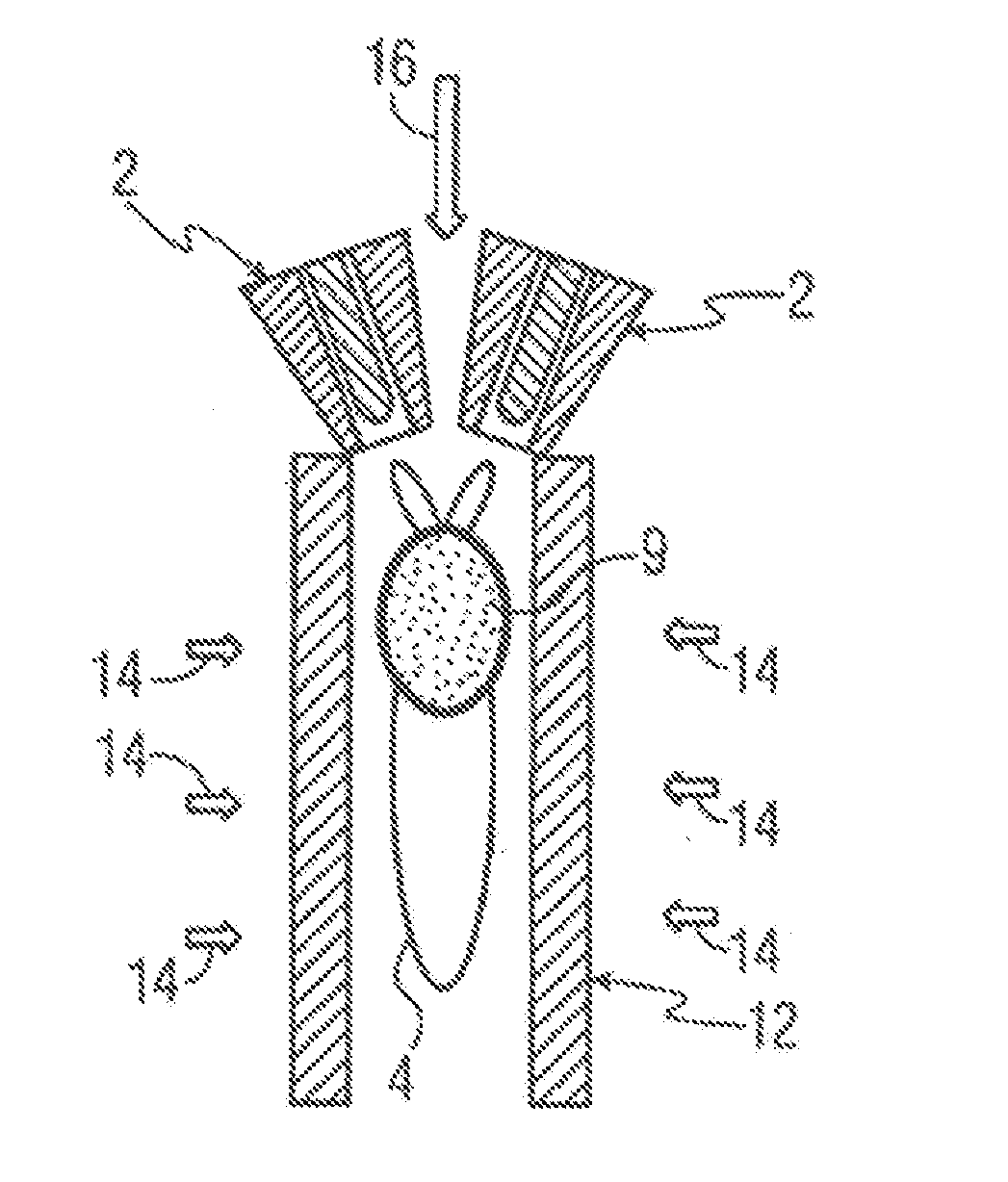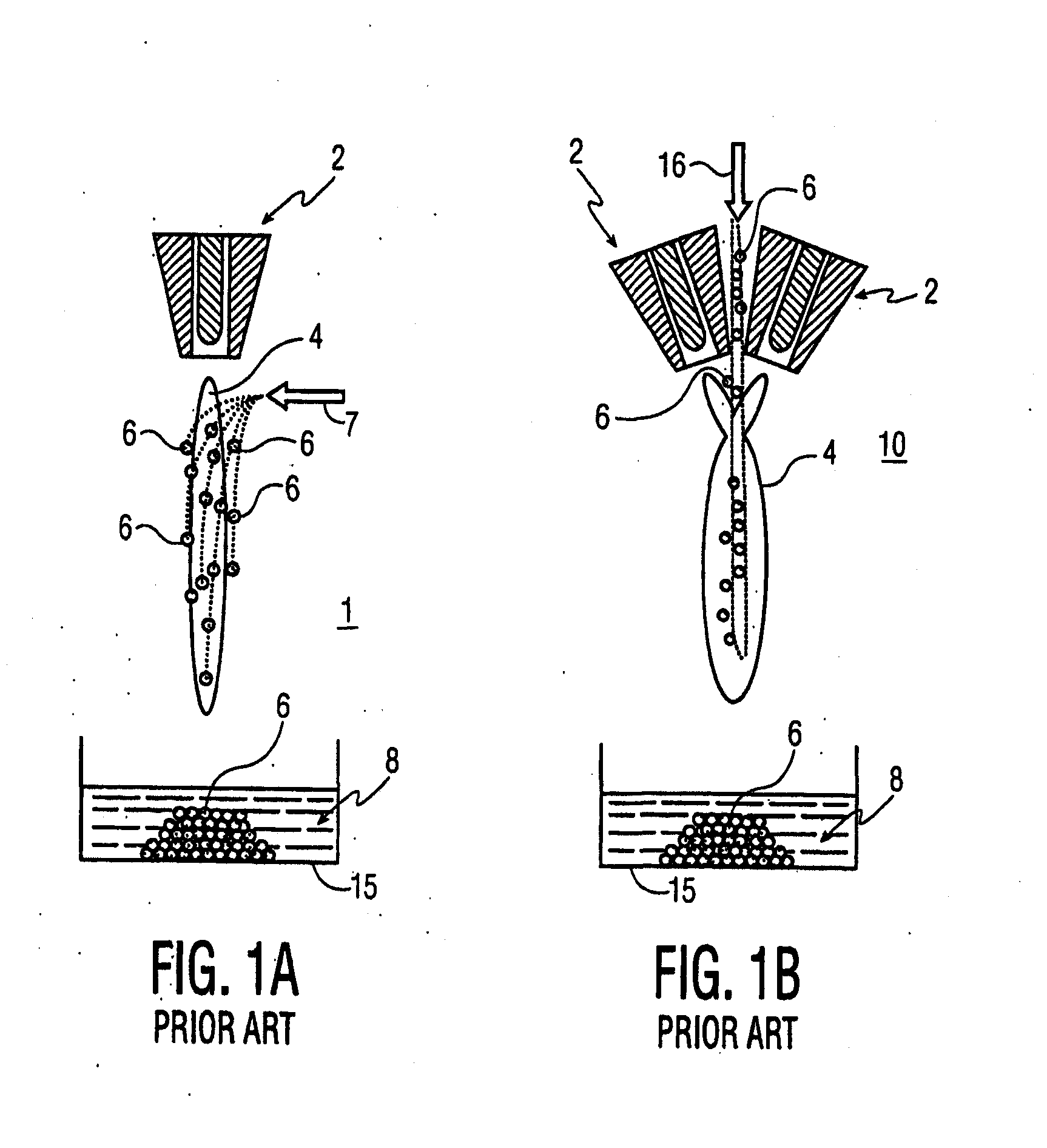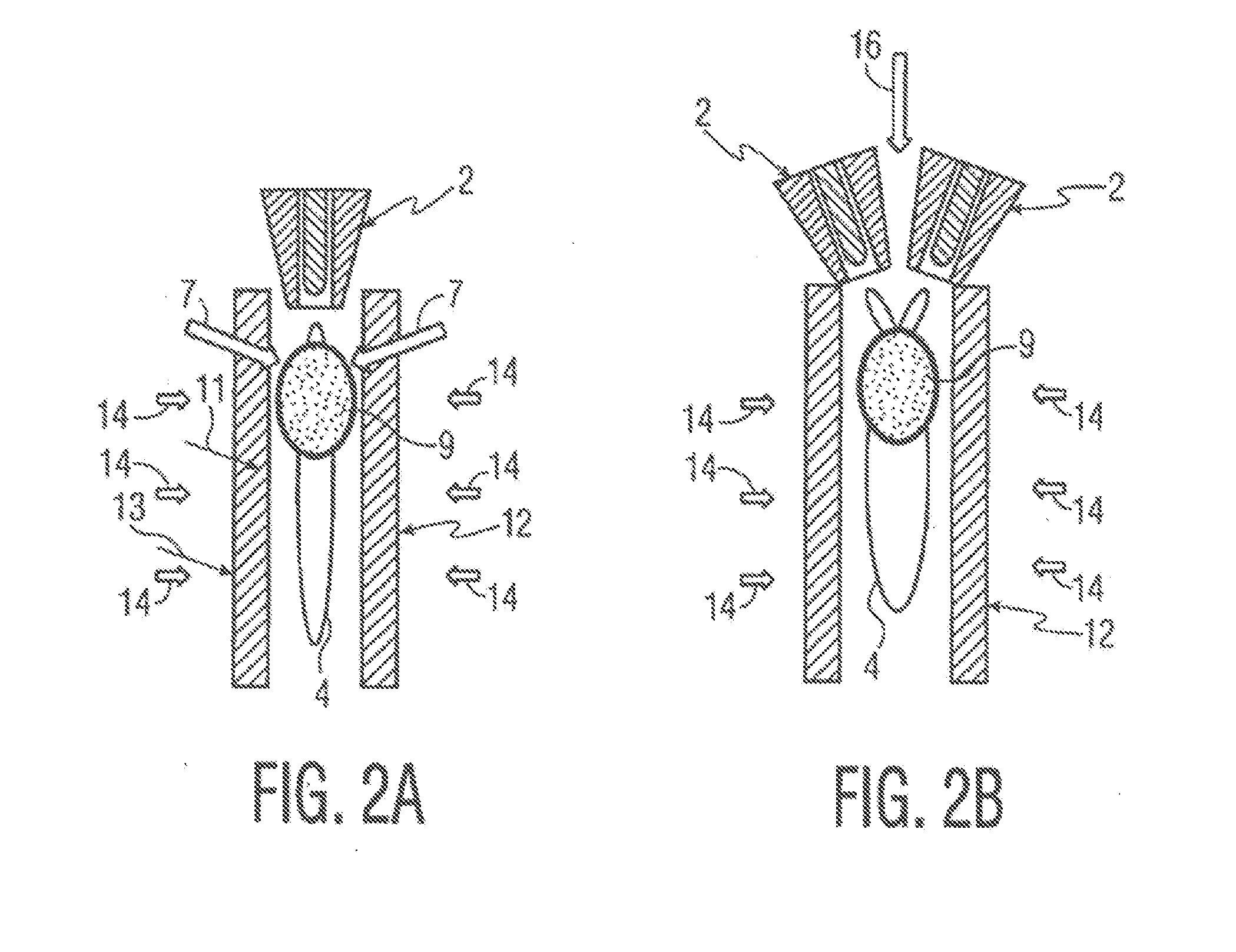Shrouded-Plasma Process and Apparatus for the Production of Metastable Nanostructured Materials
a nanostructured material and nano-structure technology, applied in the field of materials processing, can solve the problems of not all conversion and no attempt to obtain a completely uniform coating structure, and achieve the effects of enhancing sinterability, promoting densification, and efficient processing of metastable materials
- Summary
- Abstract
- Description
- Claims
- Application Information
AI Technical Summary
Benefits of technology
Problems solved by technology
Method used
Image
Examples
example 1
[0071]Synthesis of YAG powder—A starting solution was prepared by dissolving 139 g of yttrium nitrate (Y(NO3)3.xH2O)+316 g of aluminum nitrate (Al(NO3)3.9H2O) in 500 ml of deionized water. The solution was fed at a rate of 15 cc / min to an atomizer, using a peristaltic pump. Atomization was achieved by forcing the liquid under a pressure through a rectangular nozzle (0.5 mm×1.0 mm). Argon at a pressure of 10 psi was used as atomizing gas, and mixing of the solution and argon to form an aerosol was achieved inside the nozzle.
[0072]A Sulzer-Metco 9 MB plasma torch 2, operating with a Ar-10% H2 gas mixture, was used to obtain 30 kW power. A water-cooled copper shroud, attached to the plasma torch, and cooled internally with flowing argon at a pressure of 60 psi, was used as a particle reactor. The aerosol was delivered to the plasma in the manner depicted in FIG. 3A. The lower end of the tubular shroud 12 was partially immersed (about 3.0 cm) in a 100 liter drum 15 of cold water 8 to pr...
example 2
[0074]Influence of precursor concentration and flow rate—Starting solutions were prepared and processed, as in Example 1, but using different precursor concentrations and flow rates. Using a high precursor concentration and flow rate, FIG. 10A, the effect is to generate two phases: a major amorphous phase and a minor crystalline phase, which indexes as cubic YAG. In contrast, using a low precursor concentration and flow rate, the effect is to reverse the product mix, FIG. 10B; a major crystalline phase and a minor amorphous phase. On the basis of these two results, it appears that the critical parameter determining the relative abundance of the amorphous and crystalline phases in the product powder is the precursor flow rate, with the precursor concentration playing a lesser role. To validate this conclusion, experiments are now being conducted under widely different flow rate conditions, keeping the precursor concentration constant, and vice versa.
example 3
[0075]Synthesis of BN powder—A starting solution was prepared by dissolving 150 g of H3BO3 or B2O3.3H2O in 300 ml of methyl alcohol (CH3OH). The material was atomized, as in Example 1, using N2 as atomizing gas. An N2-10% H2 mixture was used as plasma gas, giving 50 kW power output. Nitrogen at a pressure of 60 psi was used as cooling gas in the water-cooled copper shroud.
[0076]An X-ray diffraction pattern of the as-synthesized powder 6 is shown in FIG. 11A for powder 6 quenched in water, and in FIG. 11B for powder collected from the sidewalls of nozzles (not shown) as described above. The crystalline peaks correspond to B2O3 and cubic-BN, with an unidentified broad amorphous peak. A noteworthy result is the appearance of cubic-BN, which is a metastable polymorph of BN, typically produced only under high pressure / high temperature processing conditions, and then only in the presence of a liquid metal catalyst. The fact that it can be produced by plasma processing at near-ambient pres...
PUM
| Property | Measurement | Unit |
|---|---|---|
| size | aaaaa | aaaaa |
| size | aaaaa | aaaaa |
| particle size | aaaaa | aaaaa |
Abstract
Description
Claims
Application Information
 Login to View More
Login to View More - R&D
- Intellectual Property
- Life Sciences
- Materials
- Tech Scout
- Unparalleled Data Quality
- Higher Quality Content
- 60% Fewer Hallucinations
Browse by: Latest US Patents, China's latest patents, Technical Efficacy Thesaurus, Application Domain, Technology Topic, Popular Technical Reports.
© 2025 PatSnap. All rights reserved.Legal|Privacy policy|Modern Slavery Act Transparency Statement|Sitemap|About US| Contact US: help@patsnap.com



